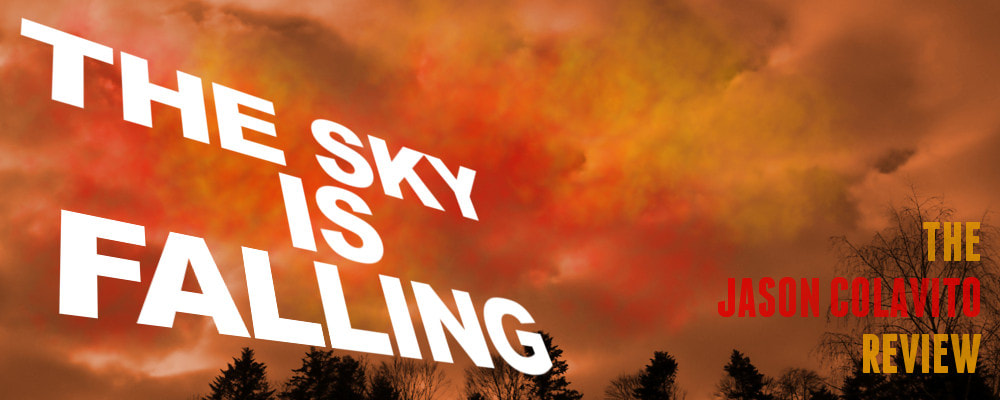63 Comments
I’m not one for just-so stories. There is a place for speculative explanations of history when those speculations can be used to help us explain evidence and, more importantly, look for new evidence that can help to prove the claim right or wrong. But in many cases, these just-so stories are simply modern assumptions and guesses projected into the past and asserted to be true. Such is the case with Australian professor Patrick Nunn, who teaches geography at the University of the Sunshine Coast. In a blog post for The Conversation later picked up by Cosmos magazine, Nunn tried to explain why world mythologies feature a widespread myth of gigantic humans.
I have a quite odd piece of medieval ephemera to consider today, and I am not entirely sure what to make of it. I ran across a medieval manuscript that at first glance seems to have a hitherto undiscussed connection to the myth of Hermes, the Flood, and the Pillars of Wisdom that I have frequently had cause to refer to in this blog. Briefly: In Late Antiquity, a myth developed in Egypt, probably from the pen of the Christian chronicler Panodorus or his rival Annianus, that Hermes Trismegistus had carved the secrets of science onto the walls of the temples of Egypt to preserve science from Noah’s Flood. In time, this myth metastasized into rival stories in medieval Arab-Islamic Egypt, one that Hermes was actually Enoch and had carved the wisdom of the angels on pillars and the other that the pyramids were built for that purpose by King Surid, a descendant of the Nephilim-giants, around 10,500 BCE. (A longer version may be read here.) The manuscript I ran across may be a rare example of this Islamic myth in Europe prior to the Renaissance.
At the beginning of August, the Institute for Noetic Sciences in Petaluma, California hosted the 61st Annual Convention of the Parapsychological Association, and one of the featured speakers was Jacques Vallée, who delivered a speech about the role of psychical research in the creation of the internet. Vallée, whose day job was in computer science for most of his life, generously credited himself with creating much of the architecture of the modern internet. He alleged that the research he and Hal Puthoff and others in their group worked on at the Stanford Research Institute in developing protocols for psychics to “locate” information they’ve never seen paralleled how computers learned to access non-local information stored elsewhere—the basic architecture of the internet. Frankly, I’d want to see a bit of proof before believing that.
To recognize that The Last Pope, a two-hour exercise in Christian hysteria, is nothing but fact-free fear-mongering exploitation is easy. To understand what exactly went wrong with the pseudo-documentary about the supposed prophecy of the popes produced by St. Malachy (sometimes spelled Malichy) requires much more effort. To write this review, I read documents in four languages: the original published version of the prophecies in Latin, the nineteenth-century book that created their modern legend in French, modern academic research into their origins in Italian, and various English-language resources. As is evident from the thin veneer of scholarship papering over the slapdash production of The Last Pope, which at times comes across as little more than a narrator reading conspiratorial blog posts at the audience, my research was (a) overkill, (b) more than anyone involved in the show’s production ever did, and (c) both more interesting than and a direct contradiction to the narrative presented on-screen.
I wasn’t planning to write an original blog post today, but in the Daily Grail news feed I came across a bizarre claim in an article about the classic Australian movie Picnic at Hanging Rock (1975) that is worth discussing. The film, for those who haven’t seen either it or the recent Australian TV adaptation released in the U.S. by Amazon Prime, revolves around the mysterious disappearance of a number of school girls in the early 1900s while out on a school trip to a rock formation in the woods. Because of the spare, poetic, but plausible depiction of the events in the film, which focus on the guilt and sadness of the survivors, many people wrongly believe that the completely fictional story was based on a real-life event.
The Sky Is Falling: How Vampires, Zombies, Androids, and Superheroes Made America Great for Extremism Peter Biskind | 256 pages | New Press | Sept. 11, 2018 | ISBN 9781620974292 | $26.99 During the 2016 presidential campaign, Donald Trump’s son-in-law, Jared Kushner, commissioned a study to better target the kinds of voters Trump would need to reach to win the election. According to an interview Kushner later gave to Forbes magazine, he learned that Trump voters were most likely to be fans of AMC’s zombie drama The Walking Dead, a show about rugged individualists struggling to beat back hordes of rampaging zombies that constantly breach their border walls after the total collapse of the federal government. Consequently, the Trump team bought air time during the broadcast. It was neither the first nor the last time that The Walking Dead—a rural-themed show with the formal structure of midcentury cowboys-and-Indians movie—has been viewed as a conservative drama. As I wrote in my Knowing Fear a decade ago, horror is almost by definition structurally conservative since it revolves around breaches of the status quo.
I am taking a couple of days off this week. Please enjoy a classic blog post (lightly edited to bring it up to date) marking fifteen years since I started writing regularly about ancient mysteries. I had launched a website in 2001 but only turned my attention to regular coverage of ancient mysteries in 2003, when I began work on my first book. The post originally ran in August 2013 to commemorate my tenth anniversary regularly covering fringe history.
I will start today with a short update about To the Stars Academy of Arts and Science and the so-called “alien” metamaterials that they have allegedly been examining. In an interview with MJ Banias of Mysterious Universe last weekend, To the Stars VP Hal Puthoff, who is also the head of Earth Tech, attempted to rebut criticism of the two companies’ agreement to work together to analyze the metals. Puthoff called it a “straightforward contractual relationship,” one that just happened to involve Puthoff at To the Stars generously agreeing to pay Puthoff at Earth Tech so that he would collect checks from both companies for his work on the metamaterials.
|
AuthorI am an author and researcher focusing on pop culture, science, and history. Bylines: New Republic, Esquire, Slate, etc. There's more about me in the About Jason tab. Newsletters
Enter your email below to subscribe to my newsletter for updates on my latest projects, blog posts, and activities, and subscribe to Culture & Curiosities, my Substack newsletter.
Categories
All
Terms & ConditionsPlease read all applicable terms and conditions before posting a comment on this blog. Posting a comment constitutes your agreement to abide by the terms and conditions linked herein.
Archives
April 2024
|
- Home
- Blog
- Books
-
Articles
-
Newsletter
>
- Television Reviews >
- Book Reviews
- Galleries >
- Videos
-
Collection: Ancient Alien Fraud
>
- Chariots of the Gods at 50
- Secret History of Ancient Astronauts
- Of Atlantis and Aliens
- Aliens and Ancient Texts
- Profiles in Ancient Astronautics >
- Blunders in the Sky
- The Case of the False Quotes
- Alternative Authors' Quote Fraud
- David Childress & the Aliens
- Faking Ancient Art in Uzbekistan
- Intimations of Persecution
- Zecharia Sitchin's World
- Jesus' Alien Ancestors?
- Extraterrestrial Evolution?
- Collection: Skeptic Magazine >
- Collection: Ancient History >
- Collection: The Lovecraft Legacy >
- Collection: UFOs >
- Scholomance: The Devil's School
- Prehistory of Chupacabra
- The Templars, the Holy Grail, & Henry Sinclair
- Magicians of the Gods Review
- The Curse of the Pharaohs
- The Antediluvian Pyramid Myth
- Whitewashing American Prehistory
- James Dean's Cursed Porsche
-
Newsletter
>
-
The Library
-
Ancient Mysteries
>
-
Ancient Texts
>
- Mesopotamian Texts >
-
Egyptian Texts
>
- The Shipwrecked Sailor
- Dream Stela of Thutmose IV
- The Papyrus of Ani
- Classical Accounts of the Pyramids
- Inventory Stela
- Manetho
- Eratosthenes' King List
- The Story of Setna
- Leon of Pella
- Diodorus on Egyptian History
- On Isis and Osiris
- Famine Stela
- Old Egyptian Chronicle
- The Book of Sothis
- Horapollo
- Al-Maqrizi's King List
- Teshub and the Dragon
- Hermetica >
- Hesiod's Theogony
- Periplus of Hanno
- Ctesias' Indica
- Sanchuniathon
- Sima Qian
- Syncellus's Enoch Fragments
- The Book of Enoch
- Slavonic Enoch
- Sepher Yetzirah
- Tacitus' Germania
- De Dea Syria
- Aelian's Various Histories
- Julius Africanus' Chronography
- Eusebius' Chronicle
- Chinese Accounts of Rome
- Ancient Chinese Automaton
- The Orphic Argonautica
- Fragments of Panodorus
- Annianus on the Watchers
- The Watchers and Antediluvian Wisdom
-
Medieval Texts
>
- Medieval Legends of Ancient Egypt >
- The Hunt for Noah's Ark
- Isidore of Seville
- Book of Liang: Fusang
- Agobard on Magonia
- Book of Thousands
- Voyage of Saint Brendan
- Power of Art and of Nature
- Travels of Sir John Mandeville
- Yazidi Revelation and Black Book
- Al-Biruni on the Great Flood
- Voyage of the Zeno Brothers
- The Kensington Runestone (Hoax)
- Islamic Discovery of America
- The Aztec Creation Myth
-
Lost Civilizations
>
-
Atlantis
>
- Plato's Atlantis Dialogues >
- Fragments on Atlantis
- Panchaea: The Other Atlantis
- Eumalos on Atlantis (Hoax)
- Gómara on Atlantis
- Sardinia and Atlantis
- Santorini and Atlantis
- The Mound Builders and Atlantis
- Donnelly's Atlantis
- Atlantis in Morocco
- Atlantis and the Sea Peoples
- W. Scott-Elliot >
- The Lost Atlantis
- Atlantis in Africa
- How I Found Atlantis (Hoax)
- Termier on Atlantis
- The Critias and Minoan Crete
- Rebuttal to Termier
- Further Responses to Termier
- Flinders Petrie on Atlantis
- Amazing New Light (Hoax)
- Lost Cities >
- OOPARTs
- Oronteus Finaeus Antarctica Map
- Caucasians in Panama
- Jefferson's Excavation
- Fictitious Discoveries in America
- Against Diffusionism
- Tunnels Under Peru
- The Parahyba Inscription (Hoax)
- Mound Builders
- Gunung Padang
- Tales of Enchanted Islands
- The 1907 Ancient World Map Hoax
- The 1909 Grand Canyon Hoax
- The Interglacial Period
- Solving Oak Island
-
Atlantis
>
- Religious Conspiracies >
-
Giants in the Earth
>
-
Fossil Origins of Myths
>
- Fossil Teeth and Bones of Elephants
- Fossil Elephants
- Fossil Bones of Teutobochus
- Fossil Mammoths and Giants
- Giants' Bones Dug Out of the Earth
- Fossils and the Supernatural
- Fossils, Myth, and Pseudo-History
- Man During the Stone Age
- Fossil Bones and Giants
- Mastodon, Mammoth, and Man
- American Elephant Myths
- The Mammoth and the Flood
- Fossils and Myth
- Fossil Origin of the Cyclops
- History of Paleontology
- Fragments on Giants
- Manichaean Book of Giants
- Geoffrey on British Giants
- Alfonso X's Hermetic History of Giants
- Boccaccio and the Fossil 'Giant'
- Book of Howth
- Purchas His Pilgrimage
- Edmond Temple's 1827 Giant Investigation
- The Giants of Sardinia
- Giants and the Sons of God
- The Magnetism of Evil
- Tertiary Giants
- Smithsonian Giant Reports
- Early American Giants
- The Giant of Coahuila
- Jewish Encyclopedia on Giants
- Index of Giants
- Newspaper Accounts of Giants
- Lanier's A Book of Giants
-
Fossil Origins of Myths
>
-
Science and History
>
- Halley on Noah's Comet
- The Newport Tower
- Iron: The Stone from Heaven
- Ararat and the Ark
- Pyramid Facts and Fancies
- Argonauts before Homer
- The Deluge
- Crown Prince Rudolf on the Pyramids
- Old Mythology in New Apparel
- Blavatsky on Dinosaurs
- Teddy Roosevelt on Bigfoot
- Devil Worship in France
- Maspero's Review of Akhbar al-zaman
- The Holy Grail as Lucifer's Crown Jewel
- The Mutinous Sea
- The Rock Wall of Rockwall
- Fabulous Zoology
- The Origins of Talos
- Mexican Mythology
- Chinese Pyramids
- Maqrizi's Names of the Pharaohs
-
Extreme History
>
- Roman Empire Hoax
- American Antiquities
- American Cataclysms
- England, the Remnant of Judah
- Historical Chronology of the Mexicans
- Maspero on the Predynastic Sphinx
- Vestiges of the Mayas
- Ragnarok: The Age of Fire and Gravel
- Origins of the Egyptian People
- The Secret Doctrine >
- Phoenicians in America
- The Electric Ark
- Traces of European Influence
- Prince Henry Sinclair
- Pyramid Prophecies
- Templars of Ancient Mexico
- Chronology and the "Riddle of the Sphinx"
- The Faith of Ancient Egypt
- Remarkable Discoveries Within the Sphinx (Hoax)
- Spirit of the Hour in Archaeology
- Book of the Damned
- Great Pyramid As Noah's Ark
- Richard Shaver's Proofs
-
Ancient Texts
>
-
Alien Encounters
>
-
US Government Ancient Astronaut Files
>
- Fortean Society and Columbus
- Inquiry into Shaver and Palmer
- The Skyfort Document
- Whirling Wheels
- Denver Ancient Astronaut Lecture
- Soviet Search for Lemuria
- Visitors from Outer Space
- Unidentified Flying Objects (Abstract)
- "Flying Saucers"? They're a Myth
- UFO Hypothesis Survival Questions
- Air Force Academy UFO Textbook
- The Condon Report on Ancient Astronauts
- Atlantis Discovery Telegrams
- Ancient Astronaut Society Telegram
- Noah's Ark Cables
- The Von Daniken Letter
- CIA Psychic Probe of Ancient Mars
- Scott Wolter Lawsuit
- UFOs in Ancient China
- CIA Report on Noah's Ark
- CIA Noah's Ark Memos
- Congressional Ancient Aliens Testimony
- Ancient Astronaut and Nibiru Email
- Congressional Ancient Mars Hearing
- House UFO Hearing
- Ancient Extraterrestrials >
- A Message from Mars
- Saucer Mystery Solved?
- Orville Wright on UFOs
- Interdimensional Flying Saucers
- Flying Saucers Are Real
- Report on UFOs
-
US Government Ancient Astronaut Files
>
-
The Supernatural
>
- The Devils of Loudun
- Sublime and Beautiful
- Voltaire on Vampires
- Demonology and Witchcraft
- Thaumaturgia
- Bulgarian Vampires
- Religion and Evolution
- Transylvanian Superstitions
- Defining a Zombie
- Dread of the Supernatural
- Vampires
- Werewolves and Vampires and Ghouls
- Science and Fairy Stories
- The Cursed Car
-
Classic Fiction
>
- Lucian's True History
- Some Words with a Mummy
- The Coming Race
- King Solomon's Mines
- An Inhabitant of Carcosa
- The Xipéhuz
- Lot No. 249
- The Novel of the Black Seal
- The Island of Doctor Moreau
- Pharaoh's Curse
- Edison's Conquest of Mars
- The Lost Continent
- Count Magnus
- The Mysterious Stranger
- The Wendigo
- Sredni Vashtar
- The Lost World
- The Red One
- H. P. Lovecraft >
- The Skeptical Poltergeist
- The Corpse on the Grating
- The Second Satellite
- Queen of the Black Coast
- A Martian Odyssey
- Classic Genre Movies
-
Miscellaneous Documents
>
- The Balloon-Hoax
- A Problem in Greek Ethics
- The Migration of Symbols
- The Gospel of Intensity
- De Profundis
- The Life and Death of Crown Prince Rudolf
- The Bathtub Hoax
- Crown Prince Rudolf's Letters
- Position of Viking Women
- Employment of Homosexuals
- James Dean's Scrapbook
- James Dean's Love Letters
- The Amazing James Dean Hoax!
- James Dean, The Human Ashtray
- Free Classic Pseudohistory eBooks
-
Ancient Mysteries
>
- About Jason
- Search
© 2010-2024 Jason Colavito. All rights reserved.










 RSS Feed
RSS Feed
